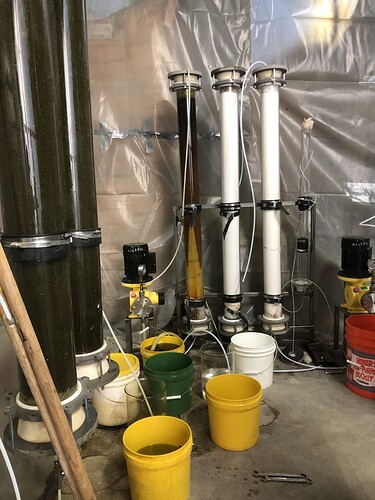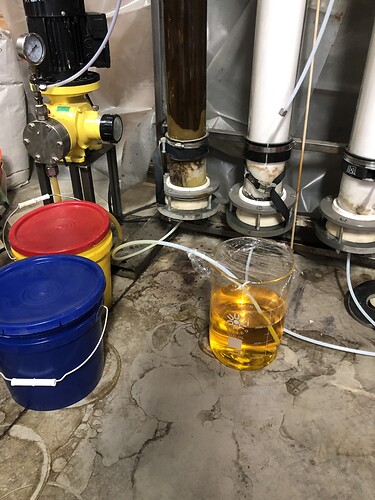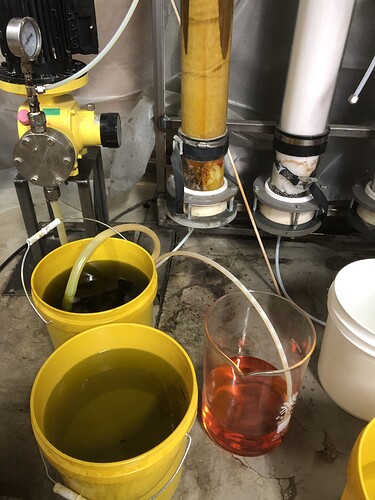Well, at least I think this is a new thread from what I could find, or for the lack of a better term. What I “couldn’t” find.
I wanted to start a thread to converse about Large batch CRC remediations from crude because. Well… I haven’t seen anything on here in regards to such… if someone has a link they can share to direct me too. Cool. Otherwise I’ll start us up here…
I was trying to find some talk as to what people are doing on said topic. Reason being, I’m working on fixing the most effective and efficient way to take raw crude to remediate vs. doing “inline” CRC remediations from raw starting material.
“Batch CRC” if you will…
I have my formula down… consistent everytime. Based on weight of Crude.
Seems to be working a a lot better then inline remediations from raw material.
But, here’s the catcher…
My problem is clogging now.
As of now. This is our SOP until some parts come in to build jacketed spools to soak, and homogenize into our initial solution to which we will be remediating…
It’s a bit jankey as of now but soon to be vastly improved…
SOP is as follows…
- We are loading warmed crude that is similar to honey/molasses into collection vessel.
- Securing lid.
- vacuuming down vessel.
Filling with solvent - heating up to 50C
- pressurizing to 50psi.
- Pushing thru CRC.
- recover.
- pour out.
Mind you This SOP is very simplified.
But my issue with clogging in lines leading from bottom of vessel to CRC I’m wondering is from whether or not I am heating up collection long enough.
This may be obvious as I’m dealing woth solid turds in my lines… hence my design that I’m waiting for to land so I can begin assembly of something I believe to be my ultimate solution…
Nothing out of this world. Just your average jacketed column rack. With 3/4” lines and from bottom of colum to collection vessel “A”. And so on…
My theory… and this may be one that’s seemingly simple and rather obvious… but my theory is that of we loaded our crude into 6”x48” jacketed spools.
Proceeded to follow standard procedure. Flooded columns with solvent. Heated jacketed once full to mix and homogenize to initial solution, which would then be drained into Collection “A”, to further be diluted to our desired solvent to oil ratio.
I mean, does this not seem sound?
Because it does to me…
To reiterate, my issue is my obvious lack of needed tools and parts as i explained I’m waiting on, but also clogging of lines…
Could it be just as simple as heating up oil and solvent longer to throughly homogenize into aqueous solution that won’t clog? I think so…
But to do that in a 300L vessel VS. 4x - 6”x36” jacketed spools… it takes less time and energy to heat said spools filled with 15-20lbs of solvent each compared to a large 300L vessel filled with solvent…
Correct me if I’m wrong here anyone but I think I’m pretty solid With my line of thinking.
I’m open to suggestions and ideas as to what people are already doing to dilute and homogenize crude into solution to be further remediated.


